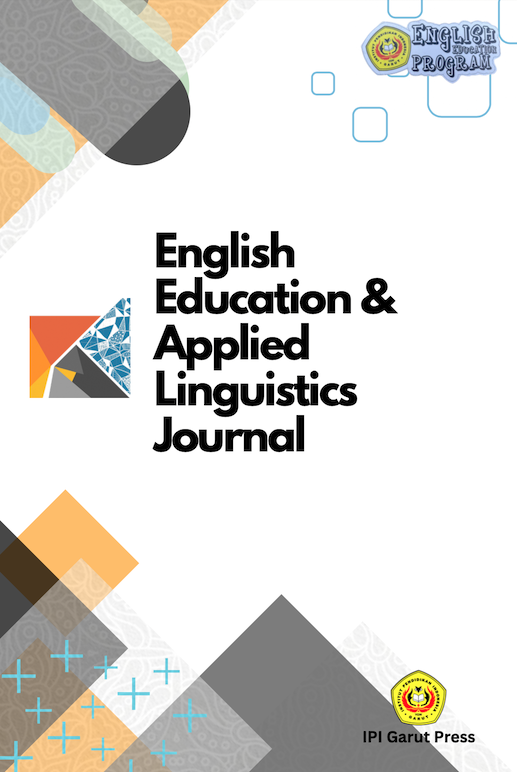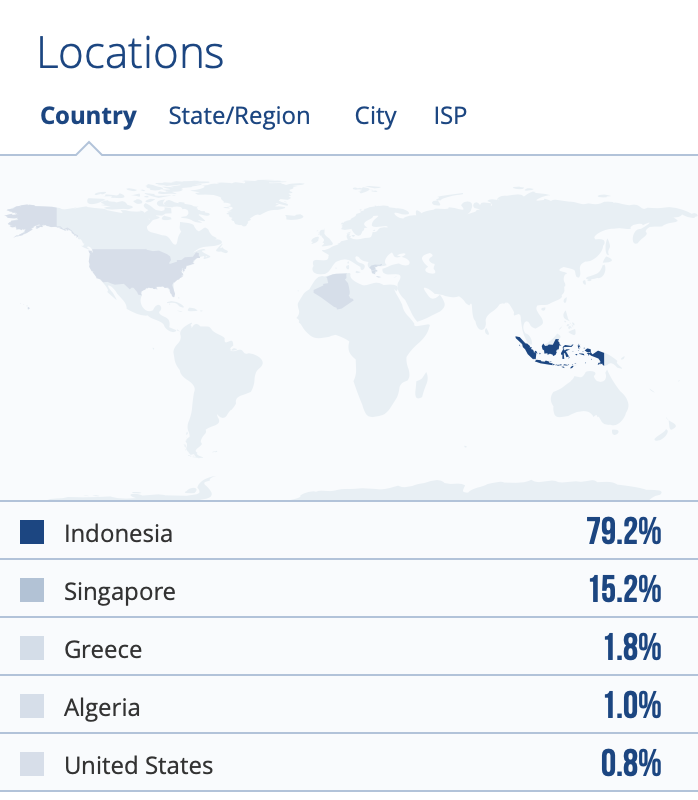Investigating Perceptions of Online Paraphrasing Tools among English-Majored Students at Sai Gon University in Learning Academic Writing
DOI:
https://doi.org/10.31980/eealjournal.v8i2.2675Keywords:
AI tools, paraphrase, perception, plagiarism, writingAbstract
Abstract
English academic writing, especially scientific reports, is difficult due to many problems. In particular, many researchers found that a large number of students are still unable to effectively paraphrase English texts, as shown by the fact that the majority of the sources are almost exactly repeated in the students' work, leading to unintentional plagiarism. To address the lack of paraphrasing skill, Artificial Intelligence (AI) can provide students with great assistance. Therefore, this study aims to investigate Sai Gon University students' perceptions towards online paraphrasing tools and recommend some ways to avoid plagiarism in learning academic writing. The data from 100 random English-majored seniors were collected through questionnaires and interviews. The findings revealed positive perceptions of students towards the utilization of online paraphrasing tools in learning academic writing. Most of them found these tools beneficial for their improvement in paraphrasing skill. Based on the data collected, the study recommends some useful and appropriate ways to avoid plagiarism by using AI tools in their writing.
References
Abas, I. H., & Aziz, N. H. (2016). Exploring the writing process of Indonesian EFL students: The effectiveness of think-aloud protocol. Advances in Language and Literary Studies, 7(2), 171-178.
Alammar, A., & Amin, E. A. (2023). EFL students' perception of using AI paraphrasing tools in English language research projects. Arab World English Journal, 14(3), 166-181. https://dx.doi.org/10.24093/awej/vol14no3.11
Ary, D., Jacobs, L. C., & Sorensen, C. K. (2010). Introduction to Research in Education (8th ed.). Wadsworth: Cengage Learning.
Asmara, Y. V., & Kastuhandani, F. (2024). Students’ lived experience in utilizing Quillbot as an online paraphrasing tool in academic writing. An English-Indonesian Journal for English, Education and Culture, 13(1), 56-65.
Barreiro, A. M. (2008). Make it simple with paraphrases: Automated paraphrasing for authoring aids and machine translation.
Bloch, J. (2012). Plagiarism, intellectual property and the teaching of L2 writing. Multilingual Matters.
Bui, V. H., Hoang, M. H., & Cu, T. T. H. (2022). Employing the Quillbot application in order to sharpen paraphrasing skills in writing academic essays for English-majored students at the school of foreign languages - Thai Nguyen University. TNU Journal of Science and Technology, 227(13), 116-124.
Cheng, Y. (2023). Exploring the effects of tool-assisted paraphrasing strategy instruction on EFL learners’ paraphrasing performance. Educational Technology & Society, 26(4), 51-68. https://doi.org/10.30191/ETS.202310_26(4).0004
Chi, D. N., & Nguyen, X. N. C. M. (2017). Paraphrasing in academic writing: A case study of Vietnamese learners of English. Language Education in Asia, 8(1), 9-24.
Columbia University. (2014). Nine principles of effective writing instruction. Graduate School of Arts & Sciences, Teaching Center.
Cribb, M. (2002). Respecting process and product in research papers. Journal of Inquiry and Research, 75, 185-199.
Du, Q. (2013). “What do you mean ‘In my own words’?”: Undergraduate ESL writers’ paraphrasing experiences in an advanced academic writing course.
Emran, A. Q., Mohammed, M. N., Saeed, H., Keir, M. Y., Alani, Z. N., & Ibrahim, F. M. (2024). Paraphrasing ChatGPT answers as a tool to enhance university students’ academic writing skills. 2024 ASU International Conference in Emerging Technologies for Sustainability and Intelligent Systems (ICETSIS), 501-505.
Fitria, T. N. (2022). Avoiding plagiarism of students' scientific writing by using the QuillBot paraphraser. Journal of English Language Studies, 4(3), 252-262.
Gardner, D. (1999). Plagiarism and how to avoid it. Hong Kong: University of Hong Kong.
Geyte, E. V. (2013). Learn to write better academic essays (3rd ed.). London: HarperCollins.
Ginting, P., Batubara, H. M., & Hasnah, Y. (2023). Artificial intelligence powered writing tools as adaptable aids for academic writing: Insight from EFL college learners in writing final project. International Journal of Multidisciplinary Research and Analysis, 6(10), 4640-4650.
Greene, S., & Lidinsky, A. (2014). From inquiry to academic writing: A practical guide. Bedford/St. Martin's.
Hirst, G. (2003). Paraphrasing paraphrased.
Ho, C. C. (2023). Free tools for paraphrasing: To use or not to use. Voice of Academia (VoA), 19(2), 139-156.
Injai, R. (2015). An analysis of paraphrasing strategies employed by Thai EFL students: Case study of Burapha University.
Kurniati, E. Y., & Fithriani, R. (2022). Post-graduate students' perceptions of Quillbot utilization in English academic writing class. Journal of English Language Teaching and Linguistics, 7(3), 437-451.
Lazic, D., Thompson, A., Pritchard, T., & Tsuji, S. (2020). Student preferences: Using Grammarly to help EFL writers with paraphrasing, summarizing, and synthesizing. In K. Frederiksen, S. Larsen, L. Bradley, & S. Thouësny (Eds.), CALL for widening participation: short papers from EUROCALL 2020 (pp. 183-189). Research-publishing.net. https://doi.org/10.14705/rpnet.2020.48.1186
Lester, J., & Lester, J. (2015). Writing research papers: A complete guide (15th ed.). Pearson Education.
Malon, J. C., Virtudazo, J., Vallente, W., Ayop, L., & Malon, M. F. O. (2024). Expressing ideas: AI-integrated paraphrasing to students’ writing skills. International Journal of Educational Methodology, 10(4), 531-542. https://doi.org/10.12973/ijem.10.4.531
Masniyah, M. (2017). The use of paraphrasing strategy to improve the students' writing ability at the 2nd year students of Sman 1 Tinambung.
Miranda, D. (2021). The impact of paraphrasing tools on students paraphrasing skills.
Mohammad, T., Alzubi, A. A., Nazim, M., & Khan, S. I. (2024a). Paraphrasing prowess: Unveiling the insights of EFL students and teachers on QuillBot mastery. International Journal of Information and Education Technology, 14(5), 642-650. https://doi.org/10.18178/ijiet.2024.14.5.2088
Mohammad, T., Alzubi, A. A., Nazim, M., & Khan, S. I. (2024b). Evaluating the effectiveness of Quillbot in improving students' paraphrasing skills: Teachers’ voices. Journal of Theoretical and Applied Information Technology, 102(6), 2556-2567.
Prathap, S., Ali, M. A., & Kamraju, M. (2019). How to write an academic research paper. Journal of Emerging Technologies and Innovative Research, 6(4), 488-493.
Raheem, B. R., Anjum, F., & Ghafar, Z. (2023). Exploring the profound impact of artificial intelligence applications (Quillbot, Grammarly and ChatGPT) on English academic writing: A systematic review. International Journal of Integrative Research, 1(10), 599-622.
Sarair, S., Astila, I., & Yuniarti, Y. (2019). Students awareness of plagiarism in paraphrasing English text. Getsempena English Education Journal, 6(2), 258-266.
Shrestha, L., Joshi, B., & Kumar, A. (2021). Writing a research paper: A guide. Journal of Universal College of Medical Sciences, 9(23), 76-81.
Syahnaz, M., & Fithriani, R. (2023). Utilizing artificial intelligence-based paraphrasing tool in EFL writing class: A focus on Indonesian University students’ perceptions. Journal of English Language Teaching, 7(2), 210-218.
Virisi, F., Miliha, L., & Cahyadin, W. (2022). Paraphrasing techniques used by students at English department of Halu Oleo University. Journal of Teaching of English, 7(2), 1-7.
Whitaker, A. (2009). Academic writing guide: A step-by-step guide to writing academic papers. City University of Seattle.
Downloads
Published
How to Cite
Issue
Section
License
Copyright (c) 2025 English Education and Applied Linguistics Journal (EEAL Journal)

This work is licensed under a Creative Commons Attribution-NonCommercial-ShareAlike 4.0 International License.






